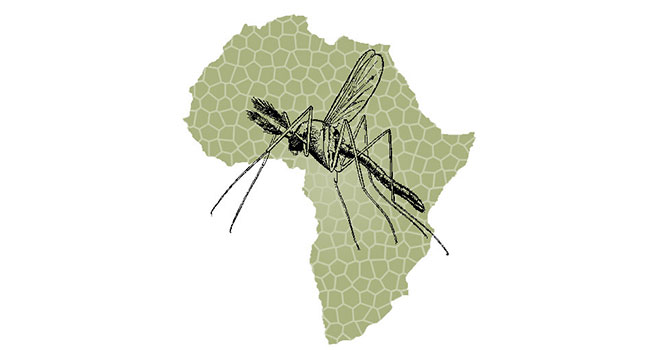Malaria
“Malaria is the main epidemic disease that causes death, suffering and underperformance in Africa.”
While a milder form of Malaria impaired the wellbeing of Europeans for centuries and could be eliminated, still, the much more severe tropical form poses the greatest threat to the health and well-being of people living in sub-Saharan Africa. In addition to causing immense suffering and numerous deaths, malaria hinders Africa’s progress and its potential to build a better future for its children. Utilizing resonance to prevent malaria and treat its chronic effects is a primary objective of ARHF.
Malaria predominantly affects children, as adults who have survived the disease in childhood generally develop sufficient immunological resistance. Despite the availability of regular medication and preventive measures, malaria remains a leading cause of death among African children. It is both a child killer and a disabler, severely affecting the health and development of young populations.
Though data on malaria prevalence in Africa vary and are often based on estimates, they consistently reveal the vast impact this epidemic has on life in sub-Saharan Africa:
- 100-450 million clinical cases of malaria each year (WHO)
- Approximately 400-600.000 fatal cases of malaria each year (WHO)
- Every minute an African child dies of malaria
- 1 out of 6 African children does not grow older than 5
- In addition to malnutrition, malaria is a major cause of the fact that half of all African children are anaemic
- Every school day up to 10-30% of children can be absent due to malaria
- The cost of malaria to the economy in Africa is estimated at $12 billion annually

A breakthrough
The PC Resonance for Malaria, called PC240m and produced by three European homeopathic pharmacies, has been used in Africa in many thousands of cases ever since it was first prepared by Peter Chappell in 2002.
This remedy has proven to be effective in treating acute malaria, chronic malaria as well as the long-term effects of malaria, for example, epilepsy or chronic headache occurring after having survived cerebral malaria.
What are the advantages of PC Malaria?
- Very effective even in patients who do not respond to regular drugs
- No side effects
- Safe for infants, pregnant women and the elderly
- Low cost
- Production, distribution and storage are easy
- No therapy resistance
- With only a short training, every health professional can effectively prescribe it
And there is still another huge advantage:
A resonance that heals a contagious disease may also help to build up resistance to that disease. This means that PC240m can also be used to prevent malaria.
Africa Malaria Prevention Project – AMPP
The ground breaking observation, that treating Malaria with PC 240m also prevented the disease, led to the Africa Malaria Prevention Project (AMPP), which provides essential malaria prevention services to hundreds of thousands of children and adults through the available infrastructure of schools, churches, clinics, and village outreach programs.
Since its inception in Malawi in 2013, AMPP has demonstrated clear effectiveness. Significant reductions in school absenteeism, hospitalizations, and malaria-related deaths have been observed across various sub-Saharan countries.
Data from a six-year study conducted in Bukavu, DR Congo, demonstrates the impact of AMPP on malaria incidence and mortality. The part of the city where AMPP was available experienced significantly fewer malaria-related hospitalizations and deaths.
AMPP impact in Bukavu, DRC
In 2023, AMPP was administered to 73,757 people, resulting in 4,162 fewer malaria cases than expected and 136 fewer malaria-related deaths, including 98 children under the age of five (a decrease of 80%).
References
- Van der Zee HE (2016). Africa Malaria Prevention Project. Homoeopathic Links 2016; 29(2):137–146.
- Van der Zee HE, Alimasi DB, Balikwisha JN, Walach H (2025). Novel Immune Supportive Prevention of Malaria, Data Collection Research in the city of Bukavu (DR Congo). International Journal of Malaria and Tropical Diseases (IJMTD) Vol. 6(1):113-121
Social Return on Investment (SROI)
While the primary aim of ARHF is to alleviate suffering, it is also crucial to consider the socio-economic implications, as healthcare costs significantly affect the economy in Africa.
The study conducted in Bukavu demonstrates that for every dollar spent on AMPP, the Social Return on Investment (SROI) in terms of the costs of health care can reach as high as 40 dollars. The SROI = 40!
The Amma4Africa teams aim to reach 15-20% more people with AMPP each year. In 2024, they have already reached over 1 million children and adults, primarily in remote regions with little access to health care, but this is still only a fraction of the population in sub-Saharan Africa. With your support, they can prevent many more malaria-related hospitalizations and deaths.
A Story of Hope & Love – an answer to malaria, AIDS and trauma in Africa
Watch this powerful documentary by Israeli filmmaker Yael Lev, who travels to Kenya to explore a groundbreaking approach to treating HIV/AIDS, preventing malaria, and easing trauma across Africa. Featuring ARHF members and volunteers, the film offers deep insight into how ARHF’s natural remedies are helping to heal and protect communities in need.
Real Stories of Healing and Hope
PC240m in a Case of Acute Malaria
Africa Malaria Prevention Project Kenya






